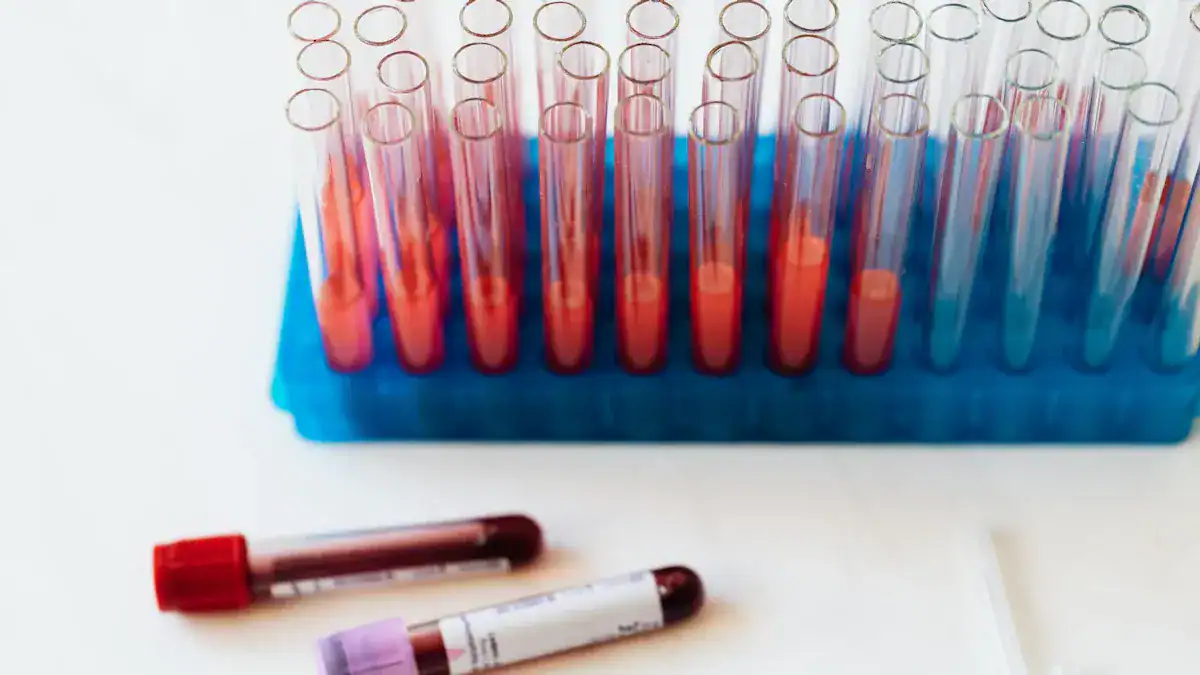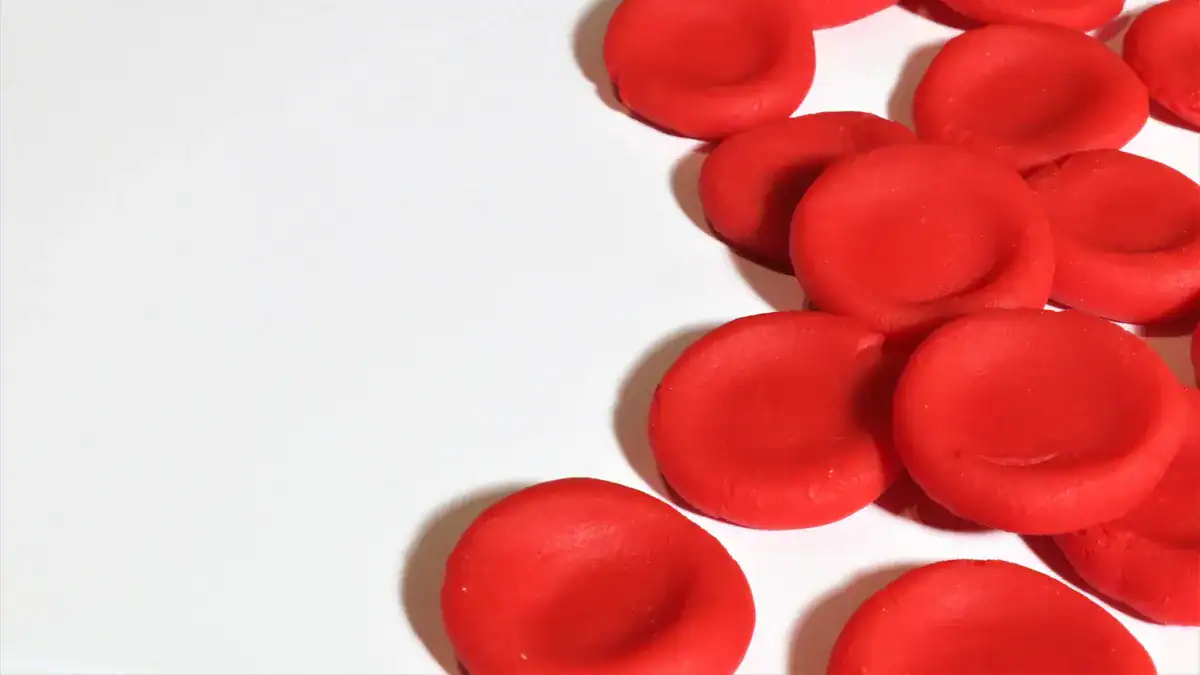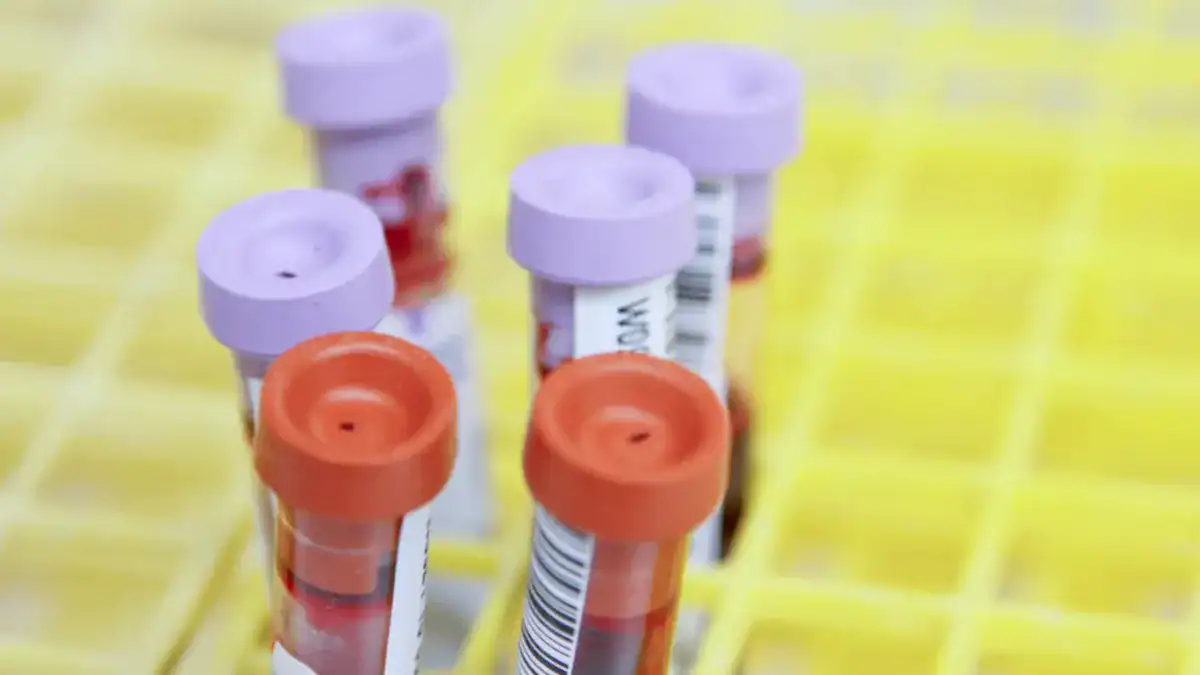
Hemoglobin is a protein inside red blood cells. It carries oxygen from the lungs to all body tissues. Hematocrit measures the volume of red blood cells in your blood. When you have high hemoglobin, your hematocrit level often appears high. This indicates an irregularly high red blood cell count. These elevated levels are not normal. A high hemoglobin count can signal various underlying health conditions. Understanding high hemoglobin levels is important for your health.
Key Takeaways
High hemoglobin means your blood has too many red blood cells. This makes your blood thicker.
Thicker blood can cause problems like headaches, tiredness, and a higher risk of blood clots, heart attacks, or strokes.
Many things can cause high hemoglobin, such as smoking, living in high places, dehydration, and certain health problems like polycythemia vera or lung disease.
Doctors find high hemoglobin with a blood test called a CBC. They treat it by fixing the cause, removing blood, or using medicine.
You can help manage high hemoglobin by quitting smoking, drinking enough water, and staying active.
What High Hemoglobin and Hematocrit Are

What High Hemoglobin and Hematocrit Are
Defining High Hemoglobin
Hemoglobin is a vital protein. It resides inside red blood cells. This protein plays a crucial role in the body. It facilitates the transportation of oxygen. Hemoglobin carries oxygen from the lungs to all body tissues.
These tissues use oxygen for aerobic respiration. Hemoglobin also transports carbon dioxide. It carries about 20–25% of the total carbon dioxide as carbaminohemoglobin. Furthermore, hemoglobin carries the regulatory molecule nitric oxide. It releases nitric oxide simultaneously with oxygen. Hemoglobin acts as an antioxidant. It absorbs unneeded oxygen in various tissues. These tissues include A9 dopaminergic neurons, macrophages, and alveolar cells. Hemoglobin also regulates iron metabolism in certain tissues.
When a person has high hemoglobin, it means their blood contains more hemoglobin than typical. This often indicates a higher number of red blood cells. Hemoglobin levels vary. Factors like age and sex assigned at birth influence these levels. Adult males typically have higher hemoglobin than adult females.
Sex | Typical hemoglobin level (g/dL) |
|---|---|
Female | 12 to 15 |
Male | 13.5 to 18 |
A high hemoglobin count falls above these typical ranges.
Understanding High Hematocrit
Hematocrit measures the volume of red blood cells in a person’s blood. It shows the percentage of blood that consists of red blood cells. For example, a hematocrit of 45% means 45% of the blood volume is red blood cells. A high percentage of red blood cells means a person has a higher hematocrit. This often accompanies high hemoglobin.
The difference between hematocrit and hemoglobin lies in what they measure. Hemoglobin measures the amount of oxygen-carrying protein. Hematocrit measures the volume of the cells that contain this protein. Both values are important for assessing blood health.
Hematocrit levels also vary by age and sex.
Hematocrit | Sex | Age Group | Range | Unit |
|---|---|---|---|---|
Hematocrit | Female | 12 Years – Adult | 36.0 – 46.0 | % |
Hematocrit | Male | 18 Years – Adult | 41.0 – 53.0 | % |
Another way to look at typical ranges:
Typical levels of hematocrit for men range from 41% to 50%.
The normal hematocrit level for women is 36% to 48%.
Why Elevated Levels Matter
When a person has high hemoglobin and a high hematocrit, it means their body produces too many red blood cells. This condition makes the blood thicker. Thicker blood moves less easily through blood vessels and organs. This sluggish blood flow can lead to several problems.
Blood becomes thicker and less able to travel through blood vessels and organs.
Sluggish blood flow leads to symptoms such as headaches, blurred vision, and red skin. This redness often appears on the face, hands, and feet.
People may experience tiredness, high blood pressure, and dizziness.
Other symptoms include discomfort in the tummy, confusion, and bleeding problems. These bleeding problems can show as nosebleeds or bruising.
Gout, which causes joint pain, stiffness, and swelling, can also occur.
Itchy skin, especially after bathing, is another possible symptom.
These elevated levels also increase the risk of serious health issues.
Increased risk of blood clots. These clots can lead to:
Pulmonary embolisms. This is a blockage in a blood vessel from the heart to the lungs.
Deep vein thrombosis (DVT). This is a blockage in leg blood vessels that can move elsewhere.
Increased risk of heart attack.
Increased risk of stroke.
Therefore, understanding high hemoglobin levels and a high hemoglobin count is crucial. They signal a need for medical attention. <<>>
Symptoms and Risks of High Levels
Recognizing Symptoms
High hemoglobin and hematocrit levels can cause various noticeable symptoms. People often experience fatigue, dizziness, and headaches. Shortness of breath can also occur, especially during physical activity. This happens because the heart works harder to pump thicker blood. Increased blood thickness can also impair circulation, leading to dizziness or lightheadedness. These sensations are common when standing up quickly or during exertion. Other symptoms include blurred vision and a reddish appearance of the skin, often on the face, hands, and feet. Individuals might also feel tired, have high blood pressure, or experience confusion. Bleeding problems, such as nosebleeds or easy bruising, can also be signs. Gout, which causes joint pain, stiffness, and swelling, is another possible symptom. Itchy skin, particularly after bathing, can also indicate high hemoglobin. These are common symptoms of high hemoglobin.
Potential Health Risks
Elevated hemoglobin and hematocrit levels pose significant health risks. The increased thickness of the blood makes it more prone to forming clots. This is a serious concern. Thicker blood is more likely to block blood vessels. This increases the risk of blood clots. These clots can lead to severe conditions. For example, a pulmonary embolism occurs when a clot blocks a blood vessel from the heart to the lungs. Deep vein thrombosis (DVT) involves clots in leg blood vessels that can travel to other parts of the body.
High hemoglobin concentrations are linked to an increased risk of stroke. This happens because of increased blood clotting tendencies and elevated blood viscosity. It also causes damage to the inner lining of blood vessels. Blood clots can travel to the brain, blocking blood flow and potentially causing a stroke. Clots can also block coronary arteries, leading to a heart attack. The heart works harder to pump thick blood, which can contribute to heart disease over time.
Individuals with polycythemia vera face a significantly higher risk of thrombotic events. An analysis of Medicare beneficiaries with high-risk polycythemia vera showed 28% experienced a thrombotic event, most commonly ischemic stroke. Ruben Mesa, MD, explains that polycythemia vera leads to the overproduction of red blood cells, white blood cells, and platelets, all contributing to these events. Chronically elevated red blood cell counts can lead to significant organ damage. The thick blood increases vulnerability to blood clots, which can harm various organs over time. This increased viscosity can result in vascular thrombosis and extensive organ damage. This makes high hemoglobin serious.
Causes of High Hemoglobin Count
Many factors can lead to a high hemoglobin count. These factors range from daily habits to serious medical conditions. Understanding these causes helps people know when to seek medical advice. Here are the common causes of high hemoglobin.
Lifestyle and Environmental Factors
Certain lifestyle choices and environmental conditions can increase hemoglobin levels. The body often produces more red blood cells to compensate for less oxygen.
Smoking Tobacco: Smoking is a major cause of high hemoglobin. Cigarette smoke contains carbon monoxide (CO). This CO binds to hemoglobin in the blood much more easily than oxygen. It forms carboxyhemoglobin. This reduces the amount of oxygen reaching the body’s tissues. The body then tries to fix this problem. It produces more red blood cells and elevates hemoglobin levels. This is a way to get more oxygen. Studies show a direct link between the number of cigarettes smoked daily and the red blood cell count. Smokers also show changes in their red blood cells, like an increase in their size. Even though smoking causes red blood cell death, the body makes more to make up for the loss. This leads to higher hemoglobin and hematocrit.
Living at High Altitudes: People living in high-altitude areas often have higher hemoglobin and hematocrit. At high altitudes, the air has less oxygen. This lack of oxygen is called hypoxia. The body responds by making more red blood cells to carry oxygen more efficiently. This is a normal adaptation. For example, people who live permanently at high altitudes consistently show elevated hemoglobin and hematocrit levels. Studies of Chilean workers exposed to high altitudes for many years also show increased hemoglobin. Their hemoglobin values become similar to those of permanent high-altitude residents. Even shift workers at high altitudes show higher hemoglobin and hematocrit than people living at sea level.
Severe Dehydration: When a person is severely dehydrated, their blood plasma volume decreases. This makes the blood more concentrated. The actual number of red blood cells does not change. However, the percentage of red blood cells in the blood appears higher. This gives a falsely high reading for hemoglobin and hematocrit. Once the person rehydrates, these levels usually return to normal.
Medical Conditions Leading to High Hemoglobin Levels
Several medical conditions can cause a high hemoglobin count. These conditions often involve problems with oxygen delivery or red blood cell production.
Polycythemia Vera: This is a rare blood cancer. It causes the bone marrow to make too many red blood cells. It can also make too many white blood cells and platelets. This leads to very thick blood. Doctors diagnose polycythemia vera using specific criteria.
Criteria Type
Criterion
Major Criteria
A1
Hemoglobin >16.5 g/dL (men) / >16.0 g/dL (women) or Hematocrit >49% (men) / >48% (women)
A2
Increased trilineage myeloproliferation with pleomorphic megakaryopoiesis in bone marrow biopsy
A3
Presence of JAK2 V617F or exon 12 mutation
Minor Criterion
B1
Subnormal erythropoietin level
Diagnosis Requirement
All three major criteria OR the first two major criteria plus the minor criterion
A person needs all three major criteria or the first two major criteria plus the minor criterion for a diagnosis. This condition is one of the polycythemia types.
Erythrocytosis (Secondary Polycythemia): This condition means the body makes too many red blood cells. It happens as a response to chronic low oxygen levels. Unlike polycythemia vera, it is not a bone marrow cancer. Instead, an underlying condition causes the body to produce more red blood cells. This leads to high hemoglobin levels.
Lung Diseases: Chronic lung diseases often cause low oxygen levels in the blood. This triggers the body to make more red blood cells. Chronic obstructive pulmonary disease (COPD) is a common example. Hypoxia, which is common in COPD patients, promotes the making of red blood cells. This directly leads to elevated hemoglobin. Other lung conditions like pulmonary fibrosis or sleep apnea can also cause this.
Heart Disease: Some heart conditions can lead to high hemoglobin. These are often birth defects of the heart. They cause the blood to not get enough oxygen. Cyanotic congenital heart diseases (CCHD) are a specific type. They cause the blood to bypass the lungs, leading to low oxygen. The body then makes more red blood cells to try and carry more oxygen. This results in a high hemoglobin count.
Kidney or Liver Disease: Certain kidney or liver diseases can also cause high hemoglobin. Some kidney tumors can produce erythropoietin. This hormone stimulates red blood cell production. This leads to an increase in hemoglobin. Liver cancer can also sometimes produce this hormone.
Cancer: Some cancers, especially kidney or liver cancers, can produce hormones that stimulate red blood cell production. This can result in a high hemoglobin count. This is a less common cause but important to consider.
Understanding these various causes helps doctors determine the best course of action. It is important to find the root cause of high hemoglobin levels.
Diagnosing High Hemoglobin and Hematocrit

The CBC Test Explained
Doctors diagnose high hemoglobin and hematocrit primarily through a Complete Blood Count (CBC) test. This common blood test measures several components of your blood. It provides important information about your overall health. The CBC test specifically looks at your hemoglobin and hematocrit. Hemoglobin (Hb) measures the amount of hemoglobin in your blood. Hematocrit (Hct) shows the percentage of your blood made up of red blood cells. These two values are key indicators. They help doctors identify if you have a high hemoglobin count. Results for a basic blood test like the CBC are typically available within 24 to 48 hours. In emergency situations, results may even be ready within an hour.
Interpreting Your Results
Interpreting your CBC results involves comparing your numbers to normal ranges. A high hemoglobin count means your hemoglobin levels are above normal. For males, a hemoglobin level greater than 18.5 g/dL indicates high hemoglobin. For females, a level greater than 16.5 g/dL is high. A sustained increase of 2 g/dL from your baseline also suggests elevated levels. Elevated hematocrit is also a sign of polycythemia. This occurs if your hematocrit level is greater than the 99th percentile for your age and sex. Understanding these numbers helps determine if your hemoglobin and hematocrit levels are too high.
Indicator | Males (g/dL) | Females (g/dL) |
|---|---|---|
Hemoglobin (WHO definition) | > 18.5 | > 16.5 |
When to Consult a Doctor
You should consult a doctor if you have concerns about your hemoglobin or hematocrit. Seek medical advice for severe and recurring symptoms related to high hemoglobin. These include severe dizziness or fatigue. Frequent symptoms like dizziness, fatigue, or tiredness, especially with chronic diseases, also warrant a visit. Indications of chronic diseases like kidney or liver disease, or blood disorders such as blood clotting or polycythemia, require professional evaluation. Your doctor will review your hemoglobin blood test results. They will also consider your symptoms and medical history. This helps them determine the best course of action.
Treatment and Management for High Hemoglobin
Managing elevated hemoglobin and hematocrit involves a two-pronged approach. Doctors first address the underlying cause. They also use direct interventions to lower blood cell counts. This comprehensive treatment aims to reduce symptoms and prevent complications.
Addressing Underlying Causes
The most effective treatment for high hemoglobin often involves resolving its root cause. For example, if a person has sleep apnea, treating this condition can normalize oxygen levels. This reduces the body’s need to produce excess red blood cells. Similarly, managing chronic lung or heart diseases can help bring hemoglobin levels back to normal. If a specific medication causes the elevation, doctors may adjust or change the prescription. This approach helps prevent high hemoglobin count from recurring.
Medical Interventions
When underlying causes are not enough, or for specific conditions, medical interventions are necessary.
Therapeutic Phlebotomy: This procedure removes blood from the body. It is similar to donating blood. Phlebotomy directly reduces the number of red blood cells. This lowers both hemoglobin and hematocrit. Studies show significant reduction in hematocrit after four or more sessions. Hemoglobin levels decrease after three sessions. This treatment helps reduce blood thickness. It lowers the risk of blood clots.
Cytoreductive Therapies: For conditions like polycythemia vera, doctors use medications to reduce blood cell production. Hydroxyurea and interferon are common choices. These drugs directly lower red, white, and platelet counts. They are frontline treatment for high-risk patients. They are also used for low-risk patients with rising counts or phlebotomy intolerance. Ruxolitinib is a second-line treatment if hydroxyurea is not effective. These treatments aim to control blood cell levels and manage symptoms.
Other Medications: Some medications can suppress red blood cell production. ACE inhibitors and ARBs can reduce erythropoiesis. They are effective in patients with chronic kidney disease or heart failure. These drugs help prevent the recruitment of pluripotent hematopoietic stem cells. This helps prevent high hemoglobin count.
Lifestyle Adjustments
Lifestyle changes play a crucial role in managing and preventing high hemoglobin.
Smoking Cessation: Quitting smoking is vital. Smoking increases hemoglobin and hematocrit levels. These levels can normalize within two years after quitting. However, it takes at least five years for all blood parameters to return to normal values. This change significantly improves overall health.
Hydration: Staying well-hydrated helps reduce blood viscosity. Mild dehydration makes blood thicker and stickier. This increases the risk of blood clots. Regular hydration, especially with electrolyte-glucose beverages, can prevent viscosity increases. This helps maintain normal blood flow.
Diet and Exercise: A balanced diet and regular exercise support overall health. They can help manage conditions that contribute to high hemoglobin. Exercise can decrease blood viscosity. It also increases plasma volume, leading to ‘autohemodilution’. This helps keep hemoglobin levels in a healthy range.
High hemoglobin and hematocrit indicate an elevated red blood cell count. This can stem from various causes, from lifestyle to serious medical conditions. Accurate diagnosis is crucial. A high hemoglobin count is a significant health indicator. It requires professional medical evaluation to identify and manage the root issue. Your doctor can help determine if your hemoglobin levels are normal. Seek personalized medical advice for any concerns about your blood.
FAQ
What is the normal range for hemoglobin?
Normal hemoglobin levels vary. For adult males, it is typically 13.5 to 18 grams per deciliter (g/dL). For adult females, it is usually 12 to 15 g/dL. These ranges can differ slightly based on age and other factors.
What does high hemoglobin mean for my health?
High hemoglobin means your blood has too many red blood cells. This makes your blood thicker. Thicker blood can increase the risk of blood clots. It can also lead to heart attacks or strokes.
Can dehydration cause high hemoglobin?
Yes, severe dehydration can make hemoglobin levels appear high. When you lack enough fluids, your blood plasma volume decreases. This concentrates the blood. The percentage of red blood cells then looks higher.
What is the main difference between hemoglobin and hematocrit?
Hemoglobin measures the protein that carries oxygen in red blood cells. Hematocrit measures the percentage of your blood made up of red blood cells. Both indicate red blood cell count.




